How to Choose a Light Bulb? Whether you’re an experienced consumer or a first-timer trying to cut your lighting bill, chances are there’s something new to learn about light bulbs. Take a walk down the lighting aisle at the store and you can quickly see that there are more light bulb choices than there are kinds of toothpaste. So how do you figure it all out?
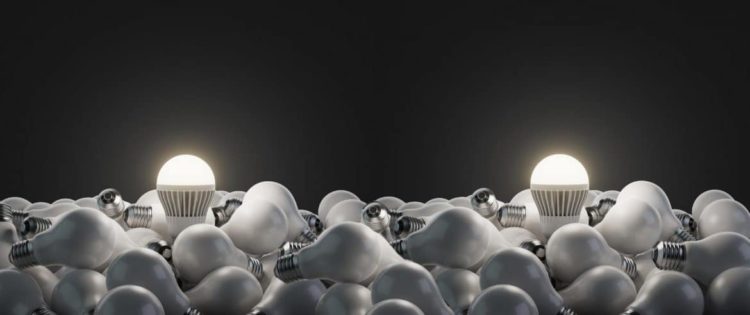
There are three good reasons to buy energy efficient light bulbs. Firstly, less energy use means fewer greenhouse gasses being produced. Second, using less energy obviously reduces your electricity bill. The last reason is often overlooked: high-efficiency bulbs last 10-50 times longer than traditional incandescent bulbs and, over the long-haul, high-efficiency bulbs will cost you less to buy.
OK, let’s get started narrowing down our choices so we know what to look for when we get to the store. The right bulb is the one that has the brightness, color, and cost that you want. Make a note of what brightness and color you’re looking for from the guide below and bring it to the store next time – they’ll show the price choices that meet your needs.
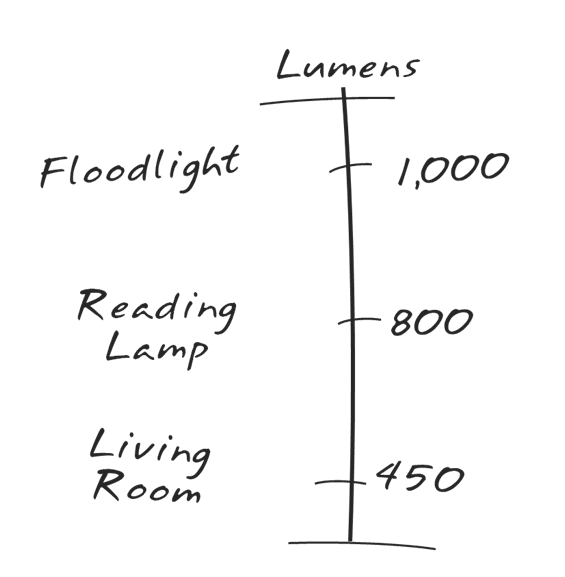
Table of Contents
Choose a Light Bulb: Brightness
Brightness is measured in lumens which can be found on the package. The more lumens, the brighter the bulb is. Typical home bulb produces about 800 lumens and you can pick the lumens based on where you’re going to be using them.
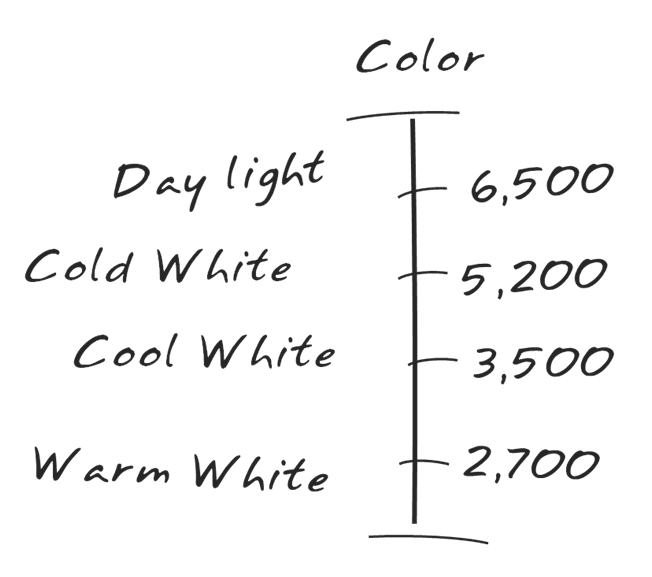
Choose a Light Bulb: Color
The color temperature of light bulbs also affects indoor temperature. Color temperature is measured by Kelvin rating. The lower the color rating, the warmer the light, and the higher the rating, the cooler the light. If you desire to create an inviting and cozy space, warm white light bulbs ranging from 2,000 to 3,500 Kelvins are advisable.
Color, or warmth, of new light bulbs, has been a long time complaint. After all, some of the early CLFs produced a color that looked like a fish tank light. Nowadays you can get just about any color you want – just look on the package for color temperature. The lower the temperature, the warmer, or more yellow, the color. As a frame of reference: incandescents are typically around 3,500.
Incandescent bulbs have a color temperature of 2700 to 3000 Kelvins. This means that they emit a warm, yellow-white light. On the other hand, cool light bulbs, such as CFL and LED, work best in kitchens and workspaces with a color temperature of 3,500 to 4,800 Kelvins.
Choose a Light Bulb: Cost
Cost initially scared lots of people off new technology bulbs initially. The cost of different light bulbs varies depending on the bulb type, wattage, and brand. In general, incandescent bulbs are the least expensive, followed by CFLs and LEDs.
LEDs are more expensive upfront but last much longer and utilize less energy, saving you money on energy bills in the long term. Additionally, the cost of LEDs has been declining in recent years, making them often the most cost-effective option over the long term.
With the new low cost of CFLs and the long life of LEDs, the lifetime cost savings is awesome with these new technologies. We can get into cost by looking more closely at the performance of each type of bulb. You can also use our Free Light Energy Saving Calculator.
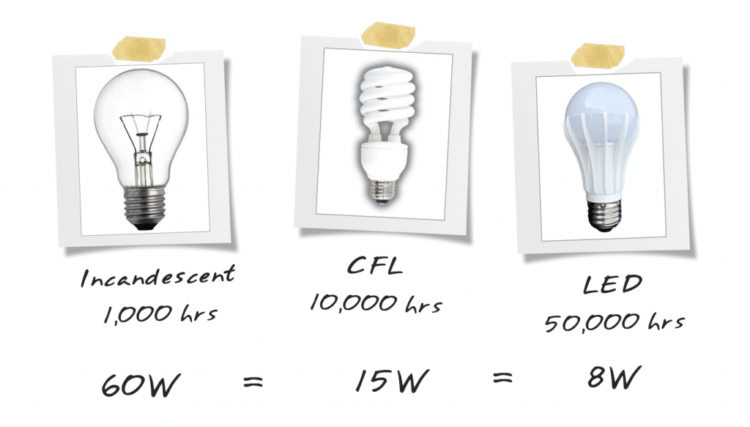
Let’s start by looking at the three main types of home light bulbs:
Incandescent Bulbs
Incandescents are the oldest type of lighting developed in 1892 by Thomas Edison. It’s 130-year-old technology; in current tech terms, using incandescent bulbs is like trying to stream a movie via telegraph.
Incandescent bulbs work by passing an electric current through a filament, typically made of tungsten, until it reaches a temperature that causes it to glow. Tungsten is chosen for its high melting point, allowing the filament to withstand the intense heat generated during operation.
As the electric current flows through the filament, it rapidly heats up, emitting light in a continuous spectrum. This means that incandescent bulbs produce a wide range of colors, from warm yellows to cooler whites, encompassing the entire visible light spectrum.
These bulbs are very inefficient, with 95% of the energy used producing heat and only 5% producing light. Incandescents are more like heaters that happen to glow. With all that heat, you’ve got to crank down the A.C. an extra few degrees in the summer – another hidden cost of incandescents. These bulbs are cheap to buy, but they use the most energy and are expensive to run. Plus, they don’t last very long, so you will have to buy another light bulb before long.
Incandescent light bulbs last about 1,000 hours on average.
CFL or Compact Fluorescent Lamp
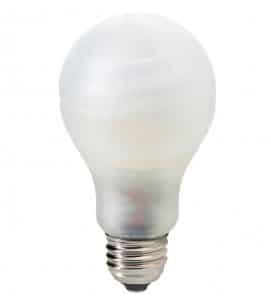
CFLs function just like a commercial fluorescent tube light, just in a smaller package. Many CFLs are dimmable and most are instant-on with no flickering or warm-up time like the early versions. There are plenty of options available that are “covered” so you don’t see the “curly-q” look of the first releases. CFLs use 25% of the energy that an incandescent uses, which mean a 15-watt bulb produces the same amount of light as a 60-watt incandescent.
CFLs do contain a minute amount of mercury vapor. This has been a sticking point for some people who want to make sure they don’t pollute the environment. Two points usually quickly get people over the hump. First, using incandescents rather than CFLs requires four times the electricity. Generating that extra electricity will actually release more mercury and toxins into the environment from the power plant that are contained in the CFL. Secondly, CFLs can be recycled at a hardware store, like 1,700 Lowes, to capture the mercury. Some businesses, like Kendall-Jackson, allow employees to bring in CFLs from home for recycling.
CFLs are reasonably priced and cost less to operate than incandescent; they also last a lot longer, so you save about $60 over the lifetime of the bulb (at California energy prices).
CLFs on average last 10,000 hours or 10 times an incandescent.
Choose a Light Bulb: LED or Light Emitting Diode
LEDs are the newest and most efficient type of lighting. They’re actually an electronic device and should be recycled like a computer or cell phone. In many states, the sellers of LED bulbs have to take them back for recycling. LEDs are 50% more efficient than CFLs and only use 13% of the energy of an incandescent which means that an 8 watt LED produces the same amount of light as a 60-watt incandescent.
Almost all LEDs are dimmable and they come in cool looking floodlights, like the photo above, and are also are available in an omnidirectional form and that means they look and act like a regular incandescent. LEDs are the most expensive to buy, but they cost very little to operate and they last up to 50 times as long as an incandescent. If you factor in the energy savings, and the longer lifetime where you won’t have to buy new bulbs or climb a ladder to replace a bulb, you save around $370 over using a 130-year old technology in that fixture.
LEDs last on average 50,000 hours or 50 times an incandescent.
Remember before going to the store next time to make some notes on what color and brightness of bulbs you’re looking for and you’ll be able to narrow down the choices pretty quickly. Let us know any cool new choices you come across so we can share the advice.
Now you know how to choose a light bulb!
Credits
Last update on 2022-05-30 / Images from Amazon API